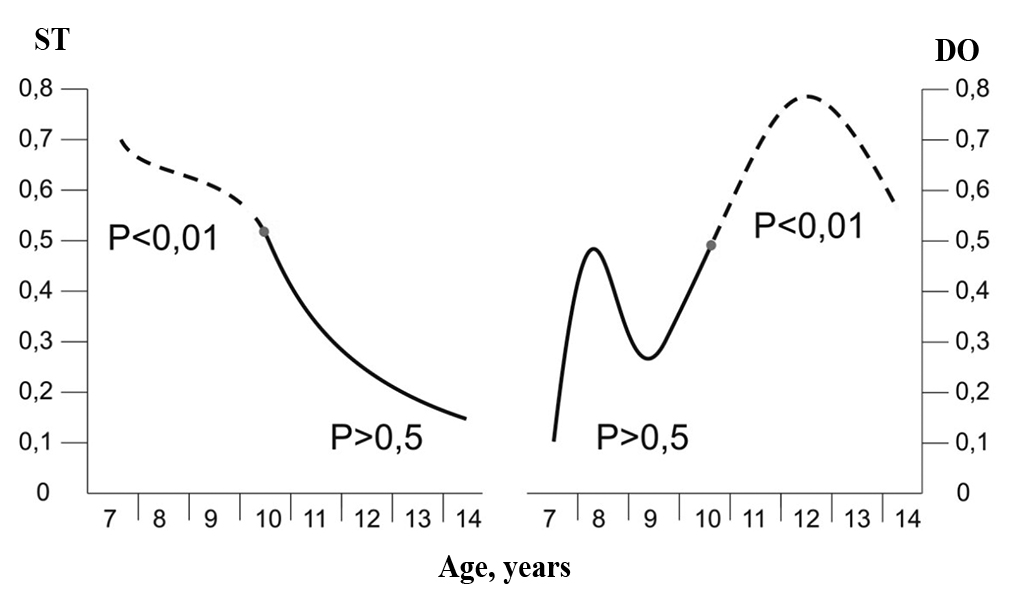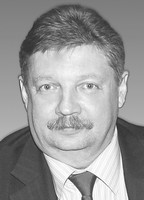Children's and youth sports: basics of training process quality assurance technology and research
Фотографии:
ˑ:
Dr.Hab., Professor, Honoured Worker of Higher Education of the Russian Federation V.P. Guba
Russian State University of Physical Education, Sports, Youth and Tourism (GTSOLIFK), Moscow
Keywords: children's and youth sports, research quality, training process assessment.
The recent obvious quality sag in the children’s and youth sports and physical education process research and the poor if any applicability of the relevant study findings appear to be due to a variety of problems dominated by the shortage of knowledge and understanding of the biological regularities and transformations natural for these age groups.
Human age is now classified into a few stages (we take herein one of many age classifications since the choice is not critical in fact for the study purposes). It should be noted that the matters of age periods are now very contradictory due to lack of consensus regarding the dividing criteria for the age stages; so the applied discretional age classification was intended to give only some reference points to avoid misunderstandings.
A long-term athletic training process from the newcomer to athletic mastery period may be broken down into the relevant age- and qualification-specific stages: see Table 1.
Table 1. Human growth stages, as provided by Н. Grimm, 1960
|
Growth stage |
Biological period |
Age, years |
|
Underage stage |
Up to the first tooth |
5-9 |
|
Primary school stage |
Up to the first maturity sign |
9-11 |
|
Pre-pubertal stage |
Up to fast body growth and sexual organs development |
11-14 |
|
Pubertal stage |
From hairs on pubis to the first menstruation |
14-15 |
|
Completion of the biological maturation stage |
From sexual maturity to completion of body growth |
17-22 |
Accurate body length and mass data may provide a researcher with a variety of highly interesting and informative indices closely correlating with the functionality and physical quality rates indicative of different human morphological and biomechanical types [8, 13]. In application to a junior athlete, highly informative are the somatic types and development options well studied and analysed in 1980-90ies [5, 7, 12]. The component-wise variations may be also listed among the key rates applicable as the “due reference values” in the rating test exercises: see Figure 1.
It should be noted that physical qualities may be developed only via the relevant morphological structures being formed to secure perfect biomechanics of motor actions. Every variation in the functionality rates is always associated with the relevant changes of the bodily morphological structure.

Figure 1. Human age correlations with somatic type (ST) and development option (DO)
ST DO
The above basics of the human growth processes are highly important for the coaches and physicians serving the adolescent age groups for the reason that knowledge of the natural biological transformation logics makes it possible to design and manage the training process so as the loads on certain body segments are increased at their intensive growth stages. It is the training process well harmonised with the natural biological processes rather than attempted to control them that is more effective i.e. secures a stable and faster athletic progress.
Therefore, only broad knowledge of child’s age-specific morphological parameters and functionality rates makes it possible to fully understand the trainee’s body growth processes and design and manage the long-term education and training systems on the most efficient basis, select promising athletes and secure their good and persistent competitive progress.
References
- Abramova T.F. Paltsevaya dermatoglifika i fizicheskie sposobnosti. Dis. dokt. biol. nauk [Finger dermatoglyphics and physical abilities. Doct. diss. (Biol.)]. Moscow, 2003, 298 p.
- Bal'sevich V.K. Ontokineziologiya cheloveka [Human Ontokinesiology]. Moscow: Teoriya i praktika fiz. kultury i sporta publ., 2000, 275 p.
- Bakhrakh I.I. Sportivno-meditsinskie aspekty biologicheskogo vozrasta podrostkov [Sport-medical aspects of biological age of adolescents]. Smolensk: SSAPCST publ., 2009, 124 p.
- Bulgakova N.Zh. Otbor i podgotovka yunykh plovtsov [Qualification and training in youth swimming]. Moscow: Fizkultura i sport publ., 1978. 152 p.
- Volkov V.M., Filin V.P. Sportivny otbor [Sports qualification process]. Moscow: Fizkultura i sport publ., 1986. 192 p.
- Guba V.P. Talant i kriticheskie tochki genotipa [Talent and critical points of genotype]. Moscow: Nauka i zhizn publ., 2013, P. 33.
- Guba V.P. Detskaya odarennost i talant: integral'naya otsenka, analiz diagnosticheskikh metodov [Children's giftedness and talent: integrated assessment, analysis of diagnostic methods]. Izvestiya Rossiyskoy akademii obrazovaniya, Moscow, 2015, no. 3 (35)., pp. 71-78.
- Guba V.P. Osnovy sportivnoy podgotovki [Fundamentals of athletic training]. Moscow: Sovetskiy sport publ., 2012, 384 p.
- Guba V.P., Marinich V.V. Teoriya i metodika sovremennykh sportivnykh issledovaniy [Theory and methods of modern sports research]. Moscow: Sport publ., 2016, 232 p.
- Zaporozhanov V.A. Kontrol v sportivnoy trenirovke [Control in sports training]. Kiev: Zdorovye publ., 1988, 144 p.
- Platonov V.N. Periodizatsiya sportivnoy trenirovki: obshchaya teoriya i ee prakticheskoe primenenie [Periodization of athletic training: general theory and its practical application]. Kiev: Olimpiyskaya literatura publ., 2013. 623 p.
- Schwarz V.B., Khrushchev S.V. Mediko-biologicheskie aspekty sportivnoy orientatsii i otbora [Biomedical aspects of sports orientation and qualification]. Moscow: Fizkultura i sport publ., 1984. 151 p.
- Chtetsov V.P. Somaticheskie tipy i sostav tela u muzhchin i zhenshchin. Avtoref. dis. dokt. biol. nauk [Somatic types and body composition in men and women. Doct. diss. abstract (Biol.)], 1978, 40 p.
Corresponding author: fizkult@teoriya.ru
Abstract
The study considers basics of the training process quality assurance technology in application to children’s and youth sports and customised to the trainees’ individual anthropometric and functionality rates, plus effects of the technology in the period of age-specific biological transformations. The study gives an analysis of the elementary body growth data in the junior athletes’ ontogenesis.
The authors came to conclusion that the training process customisation to the children’s individual anthropometric and functionality rates based on = integrated knowledge of the latter makes it possible to control the body development process to design and manage the long-term education and training systems on the most efficient basis, select promising athletes and secure their good and persistent competitive progress.


